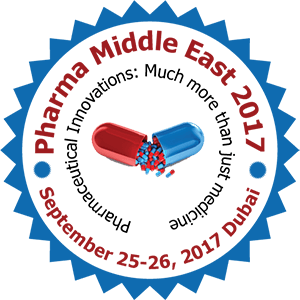
Ali Ahmed
Quaid-i-Azam University, Pakistan
Title: Prescribing and utilization trends of anti-asthmatic drugs amongst children in a tertiary care hospital in Lahore, Pakistan
Biography
Biography: Ali Ahmed
Abstract
Objective: To describe and analyze the prevalent prescribing trends of anti-asthmatics drugs among 1-12 year old children in Lahore, a major city of Pakistan, is the objective of this study. In addition, the study attempts to determine the most prevalent type of asthma amongst the stated age group of subjects. Method: Drug utilization data was recorded from 100 prescriptions collected from Children Hospital, Model Town, Lahore, during the study period of December 2014 to December 2015. The study subjects were randomly selected with 18% falling in the age group of 0-4, 48% from the age group 4-8 and 34% falling in the age range of 8-12. There were 44% of female subjects and 56% of males. Combination therapy utilization was found in 99 patients while mono-therapy was employed in 1 subject. Results: The study results reveal that the most common form of asthma prevalent in the study sample is intermittent asthma. The majority of the patients receiving therapeutic regimens have at least 3 drugs per prescription. An interesting aspect highlighted by the study is the practice of using trade names in prescribing drugs and its implications. Albuterol was prescribed in 34.90% of the subjects, followed Montelukast at 29.41%, Flixitide occupied the third rank
at 12.16% followed by Salmetrol + Fluticasone combination at 7.84%, Clenil and loratidine occupied 5.49%, Prednisolone 3.14% and lastly Cetirizine at 1.18%. Conclusion: Polypharmacy was practiced in all patients with the exception of one. We also found that therapeutic regimens were irrationally prescribed to children which could cause damage to their vital organs. Thus, intensifying the need of proper strategy development to ensure appropriate and efficient use of resources. Furthermore, continuing educational programs for the physicians and patients on rational drug prescribing and utilization are
needed to pave way for positive patient outcomes.

